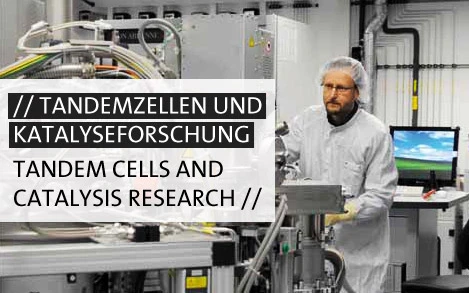Tandem cells and catalysis research
Material researchers the world over would envy Klaus Lips for this laboratory
In no fewer than 18 growth chambers, the scientist from Berlin's Helmholtz-Zentrum will be developing new material combinations for third-generation solar cells and new, effi cient energy storage devices as of mid-2015. "This will allow us to produce and investigate a globally unique range of materials", says Klaus Lips, head of the project that has been christened EMIL (Energy Materials In-situ Laboratory Berlin).
The considerable subsidies allocated to the project show just how much hope is resting on EMIL. More than 25 million euros have been provided by the German Federal Ministry of Research, the Helmholtz Society and the Max Planck Society.
Klaus Lips will be helping to produce new tandem cells, an enhanced version of today's thin-film solar cells. This will involve combining various different semiconductor materials in order to exploit a larger spectral range of sunlight. With an efficiency factor of 41 percent achieved in the lab, the tandem technology is almost twice as efficient as crystalline silicon cells. "Layered systems involving 20 to 30 interfaces make the development process extremely challenging", says Lips.
Given the large number of possible combinations, the scientists need fast results, which is exactly what EMIL is to deliver. The lab building, which covers an area of 1,000 square meters, is being built next to the BESSY II storage ring of Berlin's Helmholtz-Zentrum and will have its own beam tube. The synchrotron radiation source will provide the X-rays required for the fast analysis of the new material combinations. This eliminates waiting times of up to six months for synchrotron measurements. A separate EMIL lab is reserved for catalysis research. The Fritz Haber Institute of the Max Planck Society will be developing new catalysts for fuel production in the lab, among other things. Costly platinum, for example, is to be replaced with low-cost material such as iron compounds to break water down into oxygen and hydrogen with the help of electricity from renewable energy. The hydrogen would then act as a chemical storage facility for the green energy until it is converted back into electricity in gas-fired power plants or car engines.
by Manuel Berkel for Adlershof Special
